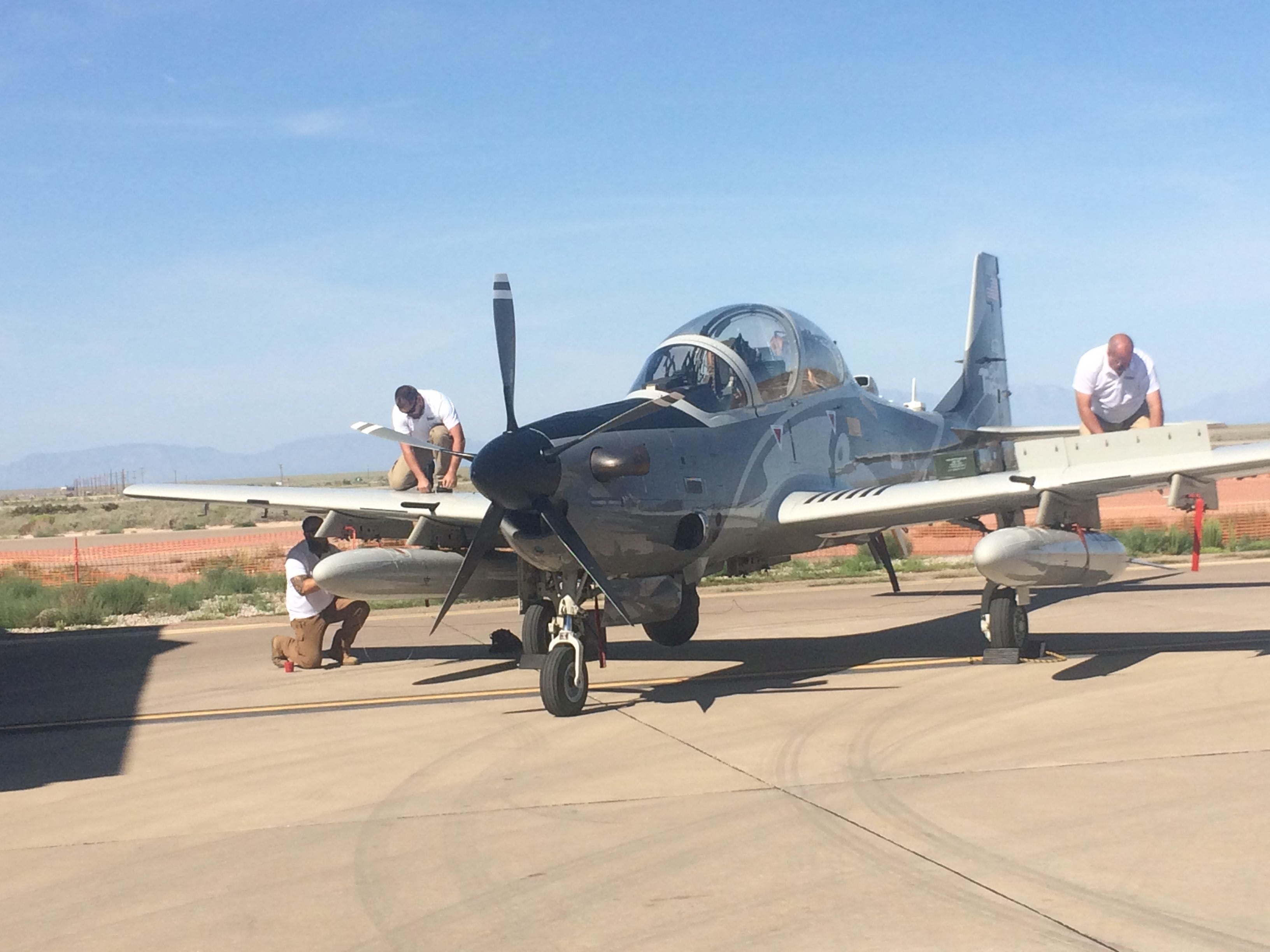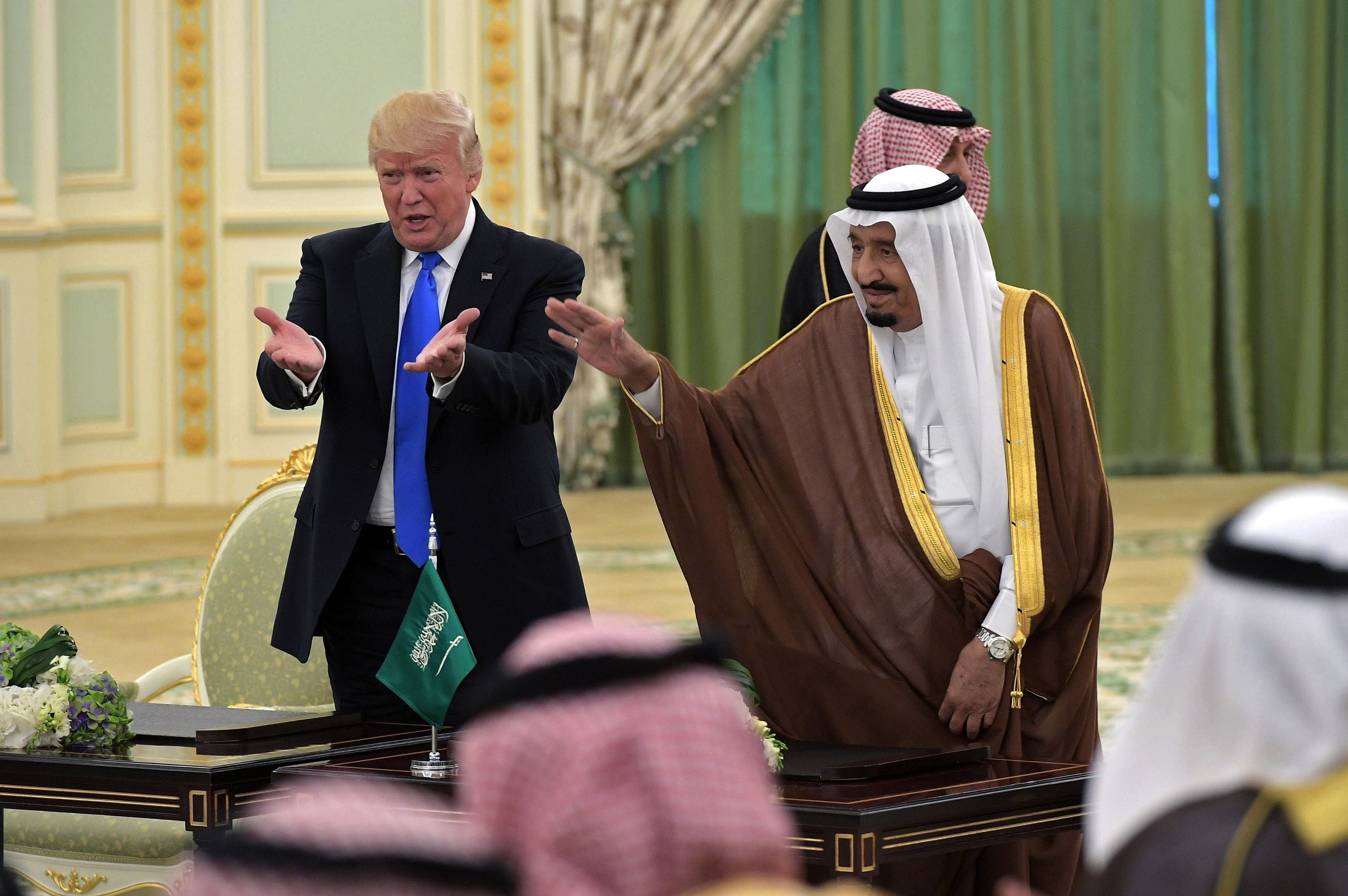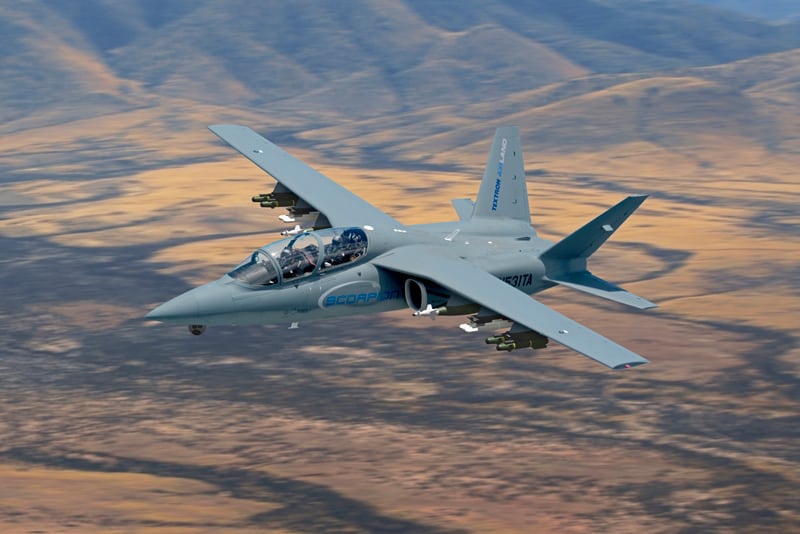DUBAI, United Arab Emirates — Textron’s Scorpion jet has had a busy couple of weeks in the Middle East, capping off an 11-day demonstration to Saudi Arabia with a visit to the Dubai Airshow.
Pilots from the Royal Saudi Air Force put the Scorpion through its paces in a series of ten flights from Oct. 29 to Nov. 9. The demonstrations took place at two Saudi bases, Brett Pierson, a Textron test pilot, told Defense News in a Nov. 14 interview in front of the jet. Photos reveal one of those bases was the air force’s King Faisal Air Base.
The Dubai Airshow, which runs until Friday, marks the first time Textron has showcased a production-representative Scorpion at an international event.
Click here for more coverage from Dubai Airshow
The demonstrations have spurred a wave of speculation on whether Saudi Arabia could become the Scorpion’s first customer. Textron self-funded the aircraft without any firm orders, believing that the jet’s relatively inexpensive price tag, low operating costs and modularity would garner orders. But international buyers and the U.S. military alike have so far shied away from the aircraft, which was launched in 2013.
Pierson, who helped instruct and guide Saudi pilots during the 11-day demo, said they seemed pleased with the jet.
“It’s a great ISR, light attack airplane, and they saw that,” he said.
“They saw the ability to loiter over a target area for a long period of time at very low fuel rates, which is what drives the very low cost per hour to operate the airplane, and they saw the ability that it has to take the information you’re seeing in an ISR orbit and because we can carry our own weapons, turn that ISR information into a tactical attack without having to involve any other airplanes.”
The configuration flown by the Saudis is the same one demonstrated to the U.S. Air Force during its light attack experiment this summer at Holloman Air Force Base, New Mexico. It includes an MX-15 electro-optical, infrared sensor in the nose — giving it laser designation and video capturing capability — and a variety of weapons, including 500-pound GBU-12 Paveway II bombs, guided and unguided rockets, and a .50 caliber gun.
It only takes about half a day for a qualified pilot to go from ground training — which includes academics some instruction in the cockpit — to taxing the jet, taking off and landing, Pierson said.
RELATED

“We did drop inert weapons, inert GBU-12s in Saudi Arabia, and it was Saudi pilots who were doing the drops. And so they were doing those drops typically within half an hour of takeoff on their very first flight in the airplane,” he said. “It’s a very easy airplane to fly, and they were able to grasp what they needed to do that quickly.”
Textron has conducted Scorpion demonstrations for other countries, but Pierson declined to elaborate on interested countries.
RELATED

In July Defense News uncovered the full details of Trump’s massive $110 billion weapons deal with the Saudis, which included $2 billion for “light close air support” aircraft. The document didn’t spell out a specific aircraft or delivery date, raising questions about whether the Saudis planned to conduct their own evaluations or if it intended to partner on a light aircraft acquisition under consideration by the U.S. Air Force.
While the recent demonstrations may indicate Saudi interest in the jet, the U.S. Air Force seems more interested in hardy turboprop aircraft like the A-29 Super Tucano and AT-6 Wolverine, which can operate from unpaved runways, for a light attack asset. After the August experiment at Holloman, officials said those two aircraft were the most likely candidates to participated in a proposed combat demo in the Middle East next year.
RELATED

But the jet may still find a niche with the U.S. Air Force. In September, Air Combat Command head Gen. Mike Holmes told reporters that he was interested in further experimentation with the Scorpion as a complementary light ISR platform.
Valerie Insinna is Defense News' air warfare reporter. She previously worked the Navy/congressional beats for Defense Daily, which followed almost three years as a staff writer for National Defense Magazine. Prior to that, she worked as an editorial assistant for the Tokyo Shimbun’s Washington bureau.








